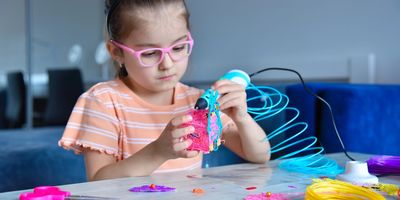Signed in as:
filler@godaddy.com
Signed in as:
filler@godaddy.com
Focus: Early exposure to 3D printing through fun, creative projects and design thinking. At this stage, the curriculum emphasizes basic concepts, hands-on making, and vocational-style activities that spark imagination. Students learn how virtual designs become physical objects and gain confidence as makers. The goal is to nurture creativity, spatial reasoning, and problem-solving in a playful environment. Short, engaging sessions keep young learners motivated while they build foundational skills.






For this age group, consistency and hands-on time are key.
Weekly sessions of about 1–2 hours work well during the school year, allowing kids to build skills gradually while staying enthusiastic. For example, an after-school club might meet once a week for a semester, covering one module or project per week. Some programs opt for a camp format, where students attend daily sessions over a week or two. A real-world example is a summer tech camp that runs Monday–Friday, 10am–3pm for one week – an immersive experience in which kids complete several projects. In either format, keeping sessions short and activity-based (with breaks and variety) helps maintain focus for 8–15 year-olds. The curriculum can be broken into multi-week units (e.g. a 4-week unit on design basics, 4 weeks on a collaborative project, etc.), with each session building on the last.
Recommended pace: one major project per month, with multiple shorter exercises in between. This gives time for reflection and iteration without overwhelming the students. Ultimately, flexibility is important – younger students (8–10) may need shorter, more frequent meetings (e.g. twice a week for 45 minutes), whereas older middle-schoolers can handle longer weekly workshops.
At this foundational stage, formal certification isn’t a priority, but recognition and clear pathways can motivate students. Many training centers offer certificates of completion or badges for each module finished, giving kids a sense of accomplishment. For example, the PrintLab education platform provides digital badge certifications for students, where they complete mini-courses in Tinkercad or Fusion 360 and take a quiz to earn a badge. Such micro-credentials (displayable on a website or certificate) reward their new skills in 3D CAD and printing. Apart from in-house certificates, the experience at this level prepares interested students to pursue further STEM programs.
Pathways forward could include joining a school robotics team, a “maker” summer camp, or advancing into the 15+ program. Parents and educators are encouraged to showcase student work in school exhibitions or maker fairs. This not only celebrates the child’s achievement but also connects them to a broader community of young makers. By the end of the 8–15 curriculum, students should feel confident and curious – ready to dive deeper into technical skills or simply carry their design-thinking mindset into other subjects.
Get 10% off your first purchase when you sign up for our newsletter!
We use cookies to analyze website traffic and optimize your website experience. By accepting our use of cookies, your data will be aggregated with all other user data.